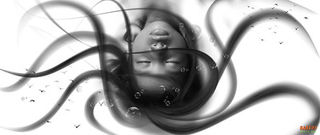Post-Traumatic Stress Disorder
How Do I Change Negative Thoughts Related to PTSD?
How do automatic negative thoughts change? Do behaviors change at the same rate?
Posted December 27, 2019 Reviewed by Devon Frye

An automatic negative thought (ANT) is a common type of thought all individuals have in reaction to situations. For individuals with post-traumatic stress disorder (PTSD), anxiety, and other psychiatric problems, however, ANTs are usually central problems of the syndromes. These negative thoughts can overwhelm the normal flow of thinking and prevent individuals from participating in normal daily work and family activities.
For PTSD, ANTs typically begin immediately after life-threatening traumatic events, along with the other symptoms of PTSD, but they are often difficult to detect. The thoughts are automatic, so individuals often do not recognize them as abnormal. Also, the thoughts occur so rapidly that individuals tend to react to them before they are even aware of the content of their thoughts.
The cognitive modules of cognitive-behavioral therapy (CBT) and other cognitive therapies are designed to identify and challenge those thoughts effectively. The therapeutic process involves multiple steps of identifying the thoughts, swapping them with more adaptive thoughts, and then connecting them to actual behavior change.
Is It a Trauma-Specific Thought, the Activation of a Core Belief, or Both?
ANTs can be like the proverbial layered onion. The first step in CBT toward reducing the impact of ANTs on your behavior is to find the ANTs. Human minds create ANTs so rapidly that most of us have to practice paying attention to them.
The first thoughts that can be detected may be the surface thoughts. As patients get better at detecting the top-layer thoughts, the later thoughts that are detected tend to reveal deeper layers of patients’ beliefs about themselves and the world. We call this layered process Phase One and Phase Two at my clinic.
Sometimes the nature of the thoughts is trauma-specific. Individuals who were involved in vehicle accidents may, for example, have the thought, “I’ll never be able to drive again.” Individuals who were sexually assaulted may have the thought, “I’m damaged goods, and no one will ever want me.”
Oftentimes these thoughts are based on core beliefs individuals had about themselves before they were involved in traumatic events. Core beliefs are thought to be broad, fundamental beliefs about oneself or the world. One type of core belief is referred to as an “I am..." statement. These may include “I am not worthy,” or “I am weak.” Another type of core belief is related to beliefs about the world. These may include “The world is unfair,” or “The world is not a safe place.”
You should plan to write down ANTs one or more times each day because they are usually too fast and fleeting to remember days afterward (writing them down more frequently than that tends to be difficult to maintain). This will give you a sense of how frequently ANTs occur and how much they impact your emotions and behaviors.
Do Thoughts Change, or Do Reactions to the Thoughts Change?
The second step is to challenge the ANTs. There are two main strategies we use to challenge ANTs. One way is to challenge the absolute truthfulness of the thought with evidence for/evidence against exercises. Patients write down a list in one column of all the reasons the thoughts might be true, and a list in another column of all the reasons the thoughts might not be true.
Usually, through the process of making a list, patients can see for themselves that the thoughts are, in fact, not absolutely true, and it is straightforward on how to modify the thoughts. A second way is to challenge the manner in which the thoughts are helpful versus unhelpful.
Once the ANTs have been challenged and found to be either untrue or unhelpful, we develop a more positive thought that is more accurate and more helpful, called the automatic positive thought (APT). Thenceforward, when patients have ANTs, we instruct them to try to replace the ANTs with the APTs.
The third step is to change behaviors or feelings. ANTs cause patients to feel negative about themselves and/or prevent them from engaging in healthy, adaptive behaviors. The idea is that after ANTs are replaced with APTs, patients feel more kindly toward themselves and engage in more healthy, adaptive behaviors. In some cases, behaviors do not need to change much, but patients are able to engage in the behaviors more easily and with less distress. In other cases, we focus on changing actual behaviors.
When all three links in the chain are impacted, ANTs diminish over time, APTs replace ANTs, and behaviors change for the better. We find, however, that symptom improvement happens in many different combinations of these three links.
Some patients always have strong ANTs, but can successfully challenge them with APTs, whereas other patients see their ANTs nearly disappear. Some patients always use APTs, whereas other patients quickly drop the APTs, or just lightly tap over them, and are able to change behaviors without being much aware of the APTs. Some patients change very specific behaviors, whereas other patients were never prevented from doing certain behaviors in the first place, but are now able to perform the behaviors with less distress.
How Hard Is It to Restructure ANTs?
Some patients are able to change the impact of ANTs relatively fast, others are able to do it only with augmentation from medication, and others do not have the cognitive capacities to alter this process much. One of the next steps we are trying to tackle in our research is to develop a taxonomy of understanding about which patients can or cannot change so that we can educate patients and get to the right strategy most efficiently, and perhaps even develop innovative approaches unique to each situation.




